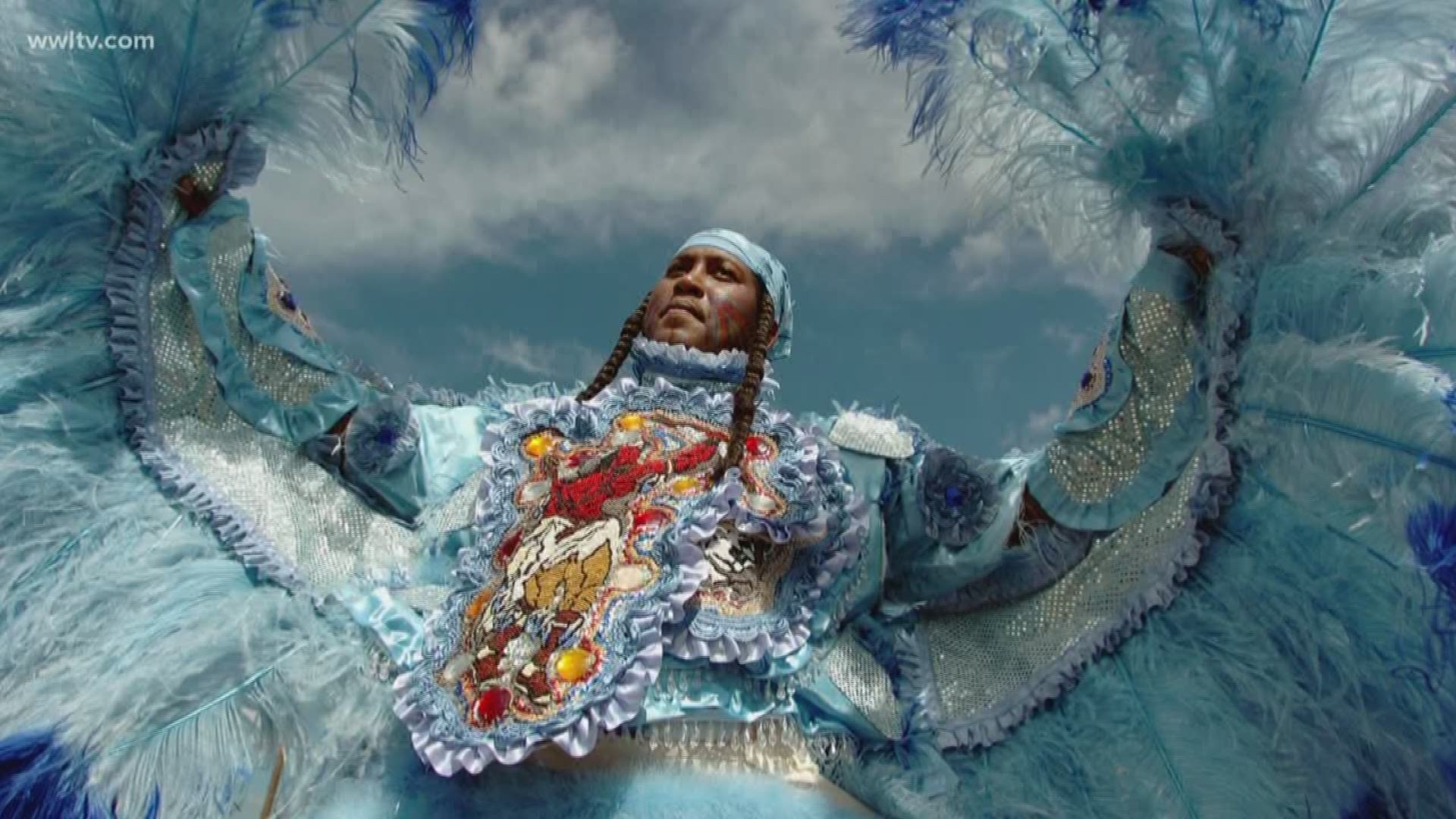NEW ORLEANS — Former Times-Picayune and Advocate photographer John McCusker is a New Orleans native who chronicled the Mardi Gras Indian tradition for more than two decades through his photographs.
But he admits there's a lot that even he didn't know about the custom. It’s partly why he wanted to share some of what he learned in a new book, “Jockomo: The Native Roots of Mardi Gras Indians” (University of Mississippi Press).
We asked McCusker how he'd describe the tradition to a first-timer.
“It's African-American people in New Orleans who spend much of the year and considerable expense crafting beautifully intricate beadwork and feather costumes, which they call an Indian suit,” he said.
“They go out on the streets at Mardi Gras in search of others that are similarly attired. It's often called the Indian tradition but what we point in the book is more accurately it should be called a cultural system. Because it has its own languages, it has its own music, its own dance, its own rituals and when you've got all those things, you're a culture."
That culture was born with Native Americans, who were here well before anyone else. McCusker says the word ‘jockomo’ points to that. Still used by Mardi Gras Indians today, McCusker says it could be considered the oldest word in the New Orleans vernacular.
“My co-author Shane Lief discovered the roots of the word jockamo reside in native people’s languages. The Choctaw had a word ‘achukma,’ which meant ‘good’ and ‘achukmafehna’ meant ‘very good.’ And it was also used in the context of a greeting, so that made perfect sense.”
The Mardi Gras Indians mixed those Native American traditions with West African rhythms, creating a culture that is uniquely New Orleans.
The book features what the authors call the oldest known photograph of Mardi Gras Indians, from 1903. But McCusker also found a 1879 newspaper article which pre-dates that by nearly 25 years.
“There's a Picayune reporter on the street and he's describing the scene at Mardi Gras and he says ‘Here comes one now. Chick-a-ma-feeno, Chick-a-ma-feeno they cry out as an Indian makes his way through the crowd, shaking his tomahawk.' Now, the fact that they would say something and quote it so closely to jockomo suggests this isn't someone who ran down to the costume shop and decided to dress as an Indian that year. It suggests that this is a connection to what we have now.”
RELATED: Mardi Gras 2020 Parade Schedule
In addition to the visual elements of the Mardi Gras Indians - intricate suits that are works of art -there is also their music. Familiar songs like “Iko Iko,” “Big Chief” and “Hey Pocky A-Way” brought the Mardi Gras Indians to new audiences, as did the Jazz Fest in the 1970s.
“They really brought the Indians out of the shadows more ways than we really give credit for and of course Quint Davis is at the center of Jazz Fest and Quint Davis was behind some of the first recordings of the Indians with the Wild Magnolias, so that's major, you can't overlook that,” McCusker said.
With their book, McCusker and Lief want readers to not overlook the intricate history of the Mardi Gras Indians, and their important place in our local culture.
“This tradition is very much at the soul of who we are, culturally, as a city. We hear words like tradition and culture thrown around a lot, but this is perhaps the oldest continuing, ongoing tradition or practice in the city uninterrupted,” McCusker said.
“These are not people of great means, in most cases. They put an incredible amount of work into it and dedication and I think they need to be appreciated for the gift that they give to us, both in the visual displays of Mardi Gras and at the heart of our music culture and our street procession culture. They're there at the nexus of all of that, all of who we are.”
MORE STORIES
► Get breaking news from your neighborhood delivered directly to you by downloading the new FREE WWL-TV News app now in the IOS App Store or Google Play.

